IN August of 2014, I was lucky enough to join a trip to Tanzania with The Giving Lens. A hybrid photo-tour and humanitarian effort, part of our trip involved living in a rural Maasai village just outside of Karatu for two days, documenting the daily life, learning to understand the history and struggles of the Maasai, and teaching photography in the nearby school. This was not a stop that catered to tourists, we were merely guests — which included sleeping inside mud huts and sacrificing a goat. Their lives did not stop for us except to share a meal and their culture. One thing that really struck me about the village was the rhythm of life there, the rise and fall of each day, and how everyone in the village had a role. While two days is nothing, this photo essay documents some of what I saw, learned, and felt during short but impactful stay.
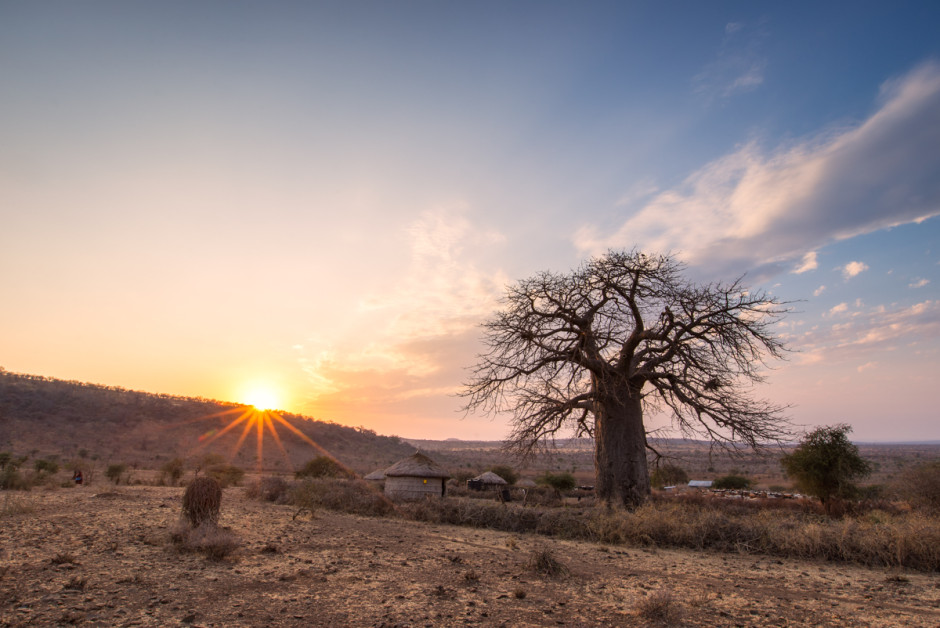
The sunrise
A baobab tree, the huts, the savannah, and the cattle. Nothing else but the wild. Maasai villages are, most of the time, located quite far from towns and cities making access to food, water, shops, education, and healthcare difficult. In addition, the climate is very dry, the vegetation is poor, and water supplies are scarce. When entering such a village, one can really feel heat, the dust, and the drought. By choice, Maasai people have a hard life. Even though everything looks quiet at sunrise, most of people are already active, preparing for another day under the sun.
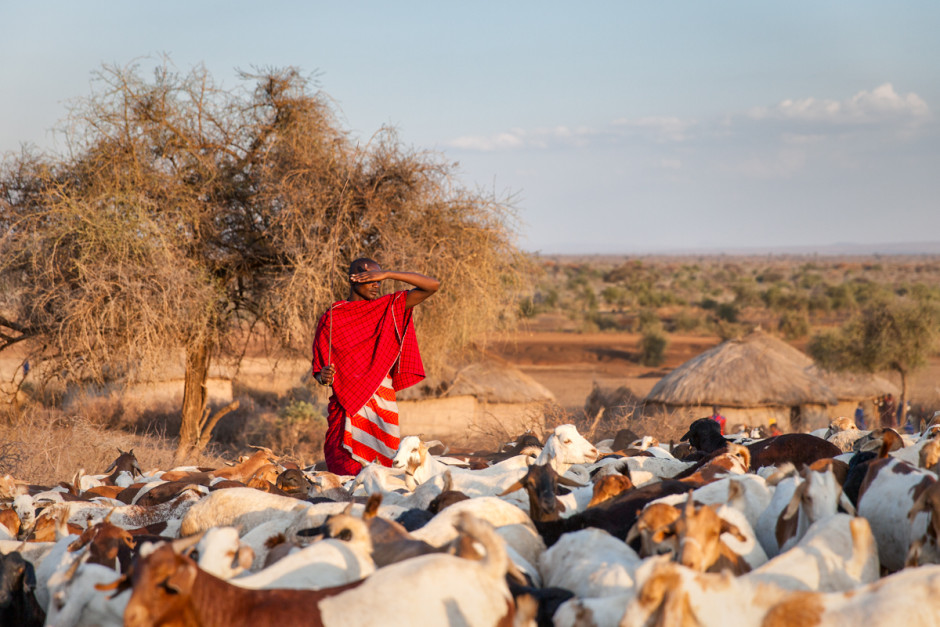
The Masai and his cattle
The Maasai still live the way their ancestors did and thus they are breeders for generations and generations. The herds, mostly cows and goats, are the primary source of food for the whole village. They're kept inside the village at night, and the warriors guide them out to graze each morning. The cattle and goats provide meat for sure, but only sometimes, such as during celebrations; otherwise, the herds are protected as a commodity to be traded or sold. But the cattle is also the measure of a man’s – and a village’s – wealth.
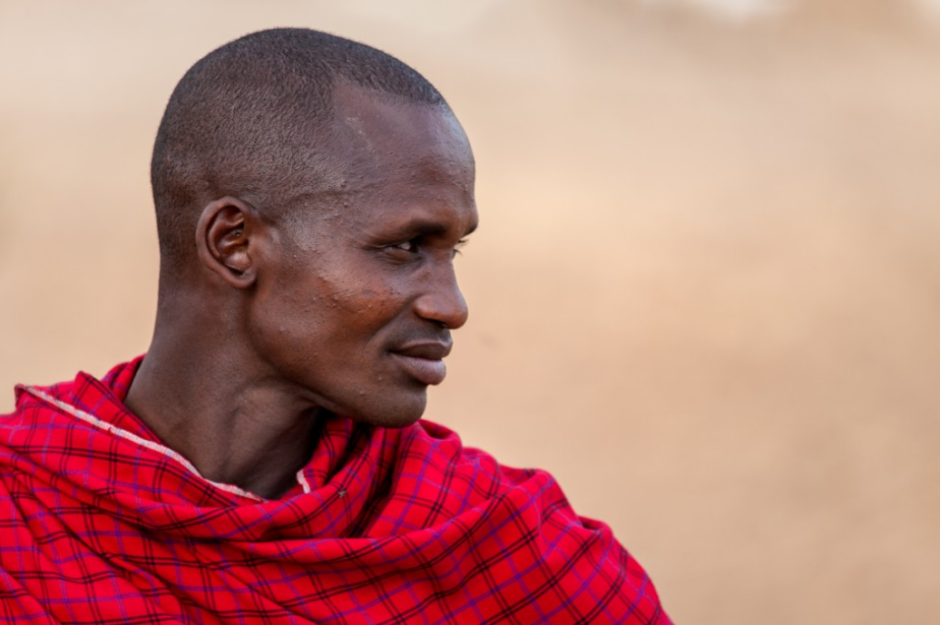
The warrior
In the past, Maasai men were raised as warriors and fought against other tribes for cattle and land. They don’t need to fight enemies like that anymore, but they are still trained to fight. These days they are prepared to fend for their flock, as their cattle may be threatened by quite a lot of dangerous animals including hyenas, cheetahs, and lions.

The young warrior
Becoming a Maasai warrior is a long process, and the status of warrior is usually not reached before adulthood. But boys are very quickly sent out of the village with the older men to take care of the younger cattle (usually calves and lambs). Eventually, they are initiated by tests of courage and endurance. During their adolescence they are circumcised, a rite that they must endure in silence to prove their resistance and manhood. They then become young warriors, can take care of the cattle, and take part in most of the men’s chores. Here a boy pauses to fix his shoe, made of recycled tire.
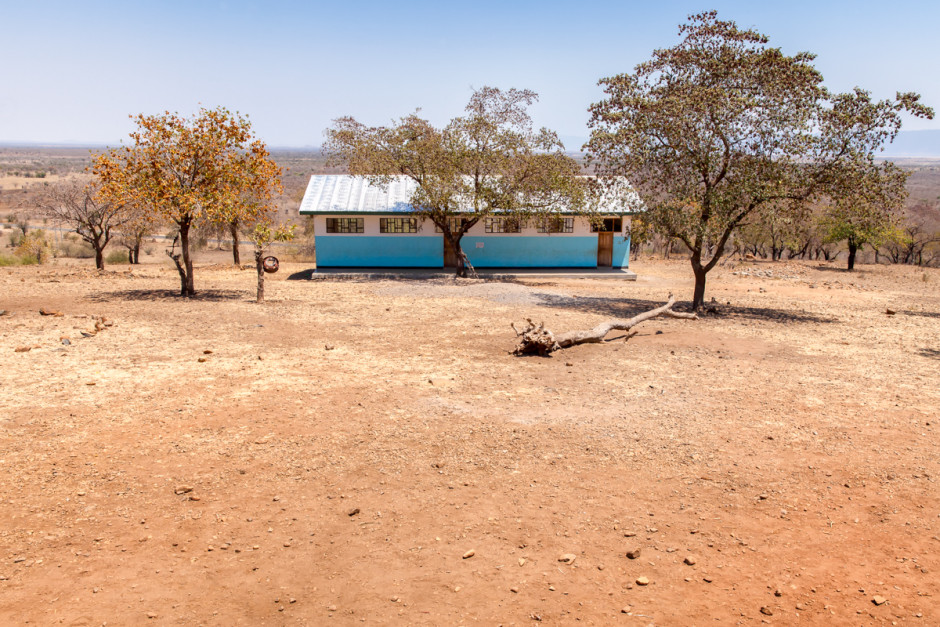
The school
School is compulsory for all children in Tanzania up to a certain age. But since Maasai villages are usually far from other town and cities, and since they don’t have access to transportation, the Maasai children often cannot reach the closest school. At least, not safely: The tribe's chief lost a daughter who was struck by a car when walking a long distance, along a busy highway, on her way to school. After this, he reached out to local NGOs and the government, and a small school has been opened next to the village.
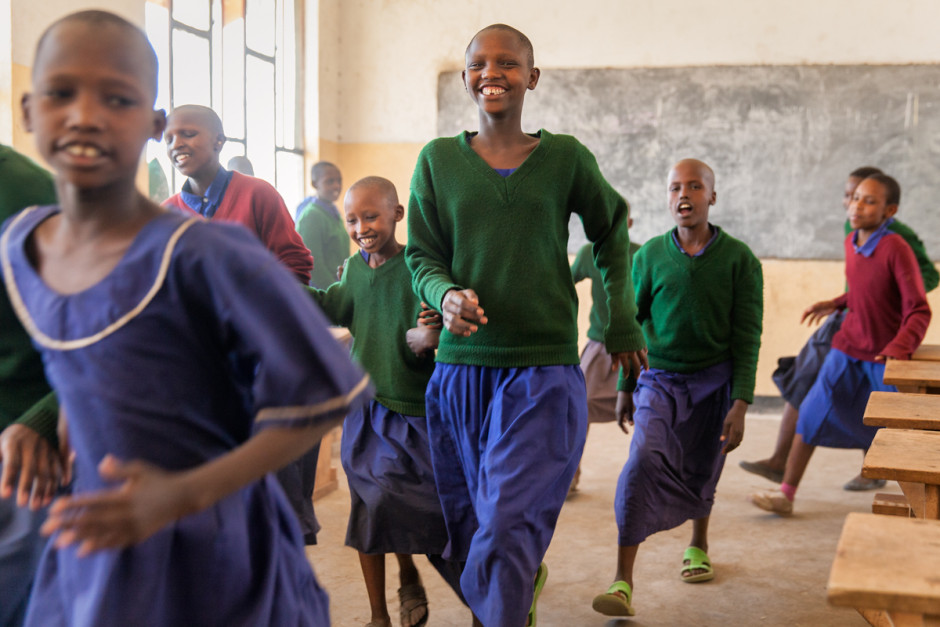
The education
School is not an integral part of the Maasai culture, neither are uniforms. Education in the tribe is traditionally the sharing of knowledge from the elders to the young, out in the field, often pertaining to raising cattle and running a village. Thus, education within the Maasai village is a 24/7/365 process which is actually had while doing everyday tasks. As a consequence, sitting in a classroom for hours seems useless for the Maasai. Thus, in addition to traditional courses, teachers have to constantly innovate and find dynamic and interactive ways of giving lessons to keep students engaged.
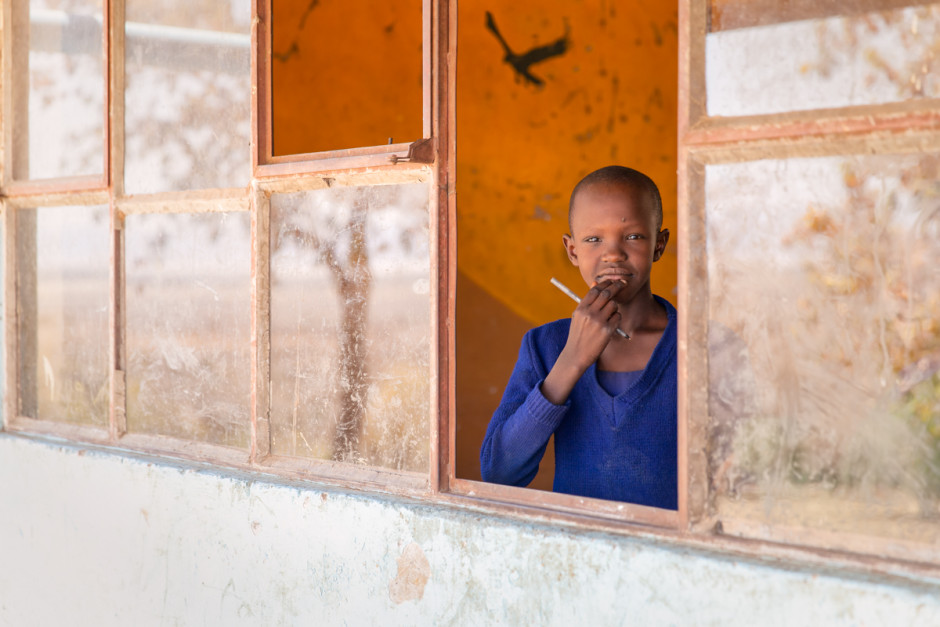
The window
Schools, and buildings in general, usually look to be in quite bad condition. There was little money to build them and less money to keep them in good condition. This school, as an example, was only built five years ago but decayed walls, cracked floors, flaking paint, and missing windows made it look substantially older than that. It is not that they are badly built, it's that they have to face severe weather conditions. The sun is extremely hot, the atmosphere can be either very dry or humid just after a rain shower, and during the rainy season heavy thunderstorms are common. Considering the school first started in the shade of the baobab tree – four walls and a roof, a few desks, and some broken windows doesn't seem so bad.
Intermission

The boma and the shúkà
The Maasai are very serious when it comes to their traditions. Their houses, called bomas, are built from branches tied together to form a circular structure which is then filled with mud. Inside you will usually find two or three slightly elevated wooden platforms covered with a hard cow skin – these are the beds. The shúkà, the Maasai blanket, is also very important in the Maasai traditions; it is, indeed, the basis of the Maasai outfit. People tie shúkàs around their shoulders, chests, and / or waists. Although red is the most typical color, blue or violet shúkàs are quite common too. They look warm but actually are fairly thin, and yet provide a very efficient protection against the sun.
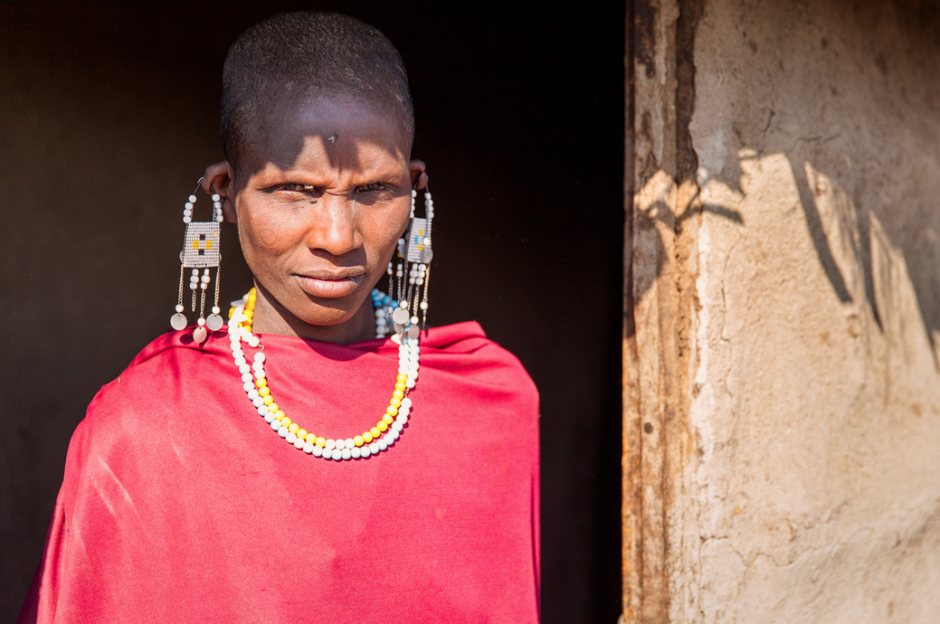
The elder woman
While Maasai men tend to get the spotlight, women, of course, play an equally important role in the Maasai society. They are traditionally responsible for many chores such as cooking and milking cows, but they also repair bomas, build fences, and do pretty much everything around the village while the warriors are in the fields with the cattle. They walk for hours seeking water and bringing it back to the village; they scour for sticks for fire, further and further each day, hacking branches off with machetes and caring back bundles of wood often with the weight of the load on their forehead – and they often do it all with a baby or two tied to their backs.
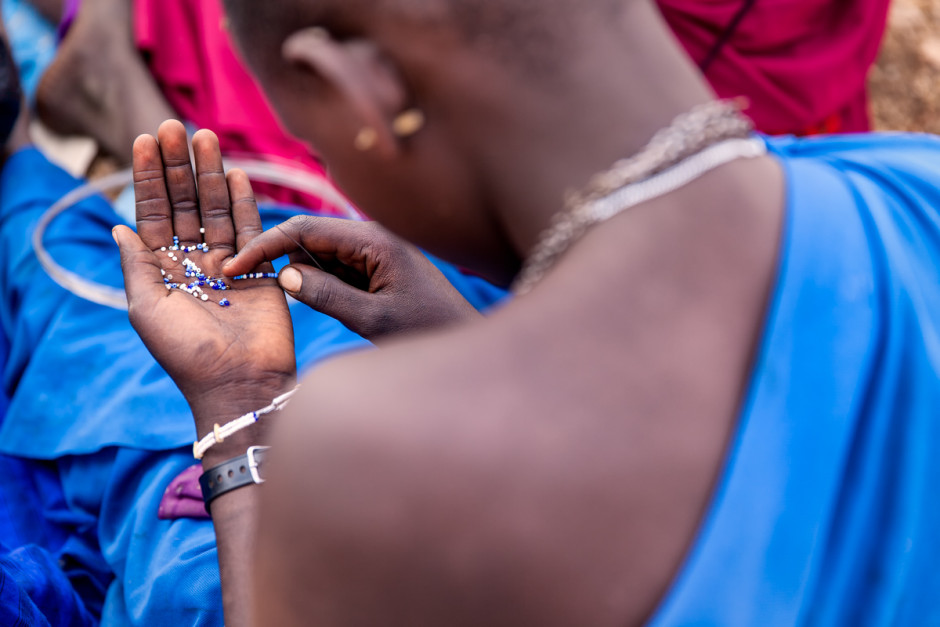
The beads
Handicraft, and especially bead working, is another strong tradition of Maasai life. The women spend hours making ornaments of all kinds that help position and identify people in the society. Hence, they sell that jewelry to visitors or in nearby markets and make a substantial income that serves the whole community. That income is, of course, extremely important since income sources for the Maasai are very scarce.
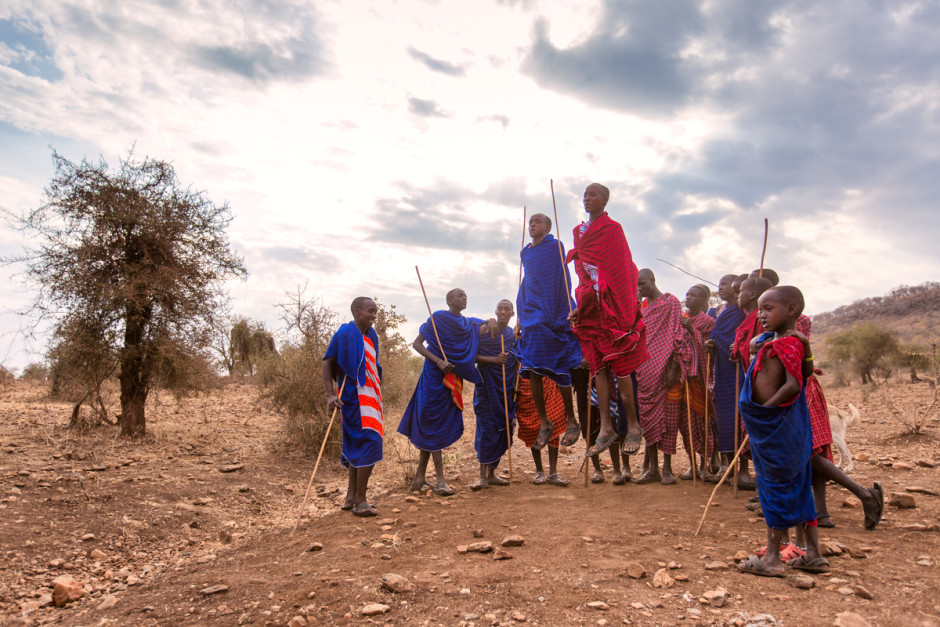
The Amudu
Music and dance are very present in the Maasai culture. The Warriors perform the famous “jumping dance,” the Adumu, while singing some almost "call and response" style harmonies around a song leader, the olaranyani, who sings the main melody. The Adumu is basically a competition between the dancers: the objective is to jump higher that the others while keeping a narrow posture and hitting the ground as hard as possible with your feet.

The sunset and the baobab tree
The baobab tree, or Adansonia digitata, is one of the symbols of Africa. Baobab can be up to 30 meters high (around 100 feet) but their trunks are more impressive, reaching diameters up to 12 meters (around 40 feet). They are believed to live up to 1,000 years. It is thus easy to understand why they are a symbol of strength, power, and endurance – three values that each and every Maasai has to strongly believe in in order to succeed at handling the daily challenges of their way of life.
